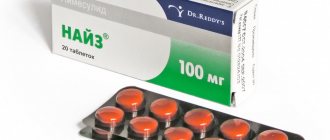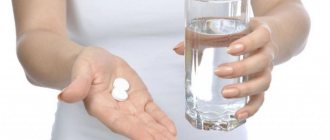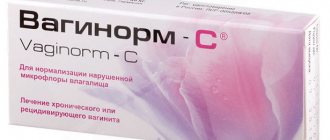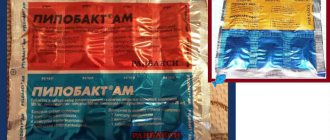1867
Author of the article
Evgeniy Nikolaevich Konoplev
Reading time: 6 minutes
AA
To treat diseases caused by harmful bacteria, doctors often prescribe penicillin antibiotics. Amoxicillin suspension is one of the forms of release of the drug with the same name and can be used for both children and adults. The product has a wide range of effects and suppresses the action of E. coli, staphylococci and other pathogens.
pharmachologic effect
Amoxicillin is an antibiotic that has a wide spectrum of effects. A group of antibiotics - semisynthetic penicillins . The abstract indicates that the drug is a 4-hydroxyl analogue of ampicillin . Provides a bactericidal effect. Demonstrates activity against aerobic gram-positive bacteria, namely Streptococcus spp., Staphylococcus spp. (except for those strains that produce penicillinase). Also active against aerobic gram-negative bacteria: Shigella spp., Neisseria gonorrhoeae, Escherichia coli, Neisseria meningitidis, Klebsiella spp., Salmonella spp.
Pharmacokinetics and pharmacodynamics
Amoxicillin trihydrate is very quickly and completely absorbed from the digestive tract, while the acidic environment of the stomach is not destroyed. The maximum level of concentration of the substance in the blood is observed 1-2 hours after taking the drug. If you double the dose of the drug, the concentration also doubles. If there is food in the stomach, the overall absorption is not reduced. If amoxicillin is administered IV or IM, similar concentrations of the active substance are observed in the blood. The substance binds to plasma proteins by approximately 20%. In the body, the active substance is distributed in fluids and tissues. The presence of large concentrations of the active substance is noted in the liver.
The plasma half-life is 1-1.5 hours. Approximately 60% of an orally administered dose is excreted from the body in the urine. Output unchanged. A certain amount of the substance is also found in feces. A longer half-life is observed in the elderly and neonates.
In small quantities it is able to penetrate the BBB during inflammatory processes of the pia mater.
Composition and release forms
Amoxicillin is available in three forms - tablets, granules for suspension and capsules. The active ingredient, regardless of the variety, is amoxicillin trihydrate. The excipients in different forms of the antibiotic differ. In pediatrics, a suspension is most often used due to the concentration of the active element that is safe for the child.
Auxiliary components in suspension:
- flavoring (strawberry or raspberry);
- sucrose;
- sodium saccharinate;
- sodium benzoate;
- simethicone;
- sodium citrate;
- guar gum.
The powder for preparing the suspension is placed in a tube of dark glass or plastic. A measuring spoon is included with the product. The bottle is additionally packed in a cardboard box. The granules and the finished suspension have a fruity odor and neutral taste. Capsules and tablets are placed in blister packs of eight or ten pieces each. Amoxicillin always comes with detailed instructions from the manufacturer.
Indications for use of Amoxicillin
The following indications for the use of this drug in combination with clavulanic acid , as well as as monotherapy, are determined:
- infectious and inflammatory diseases provoked by sensitive microorganisms ( bronchitis , tonsillitis , pyelonephritis , pneumonia , as well as cystitis , urethritis , infections of the digestive system, gynecological infectious diseases, gonorrhea , diseases of soft tissues and skin of infectious origin);
- in combination with metronidazole, it is used to treat chronic gastritis during an exacerbation, as well as duodenal and gastric ulcers during an exacerbation (provided that the ulcer is associated with Helicobacter pylori).
Also for the prescription of Amoxicillin tablets and other forms of the drug there are the following indications:
- leptospirosis , listeriosis ;
- tick-borne borreliosis ( Lyme disease );
- shigellosis;
- salmonellosis and salmonella carriage;
- meningitis;
- sepsis;
- endocarditis (for the purpose of prevention).
Contraindications
Please note that the following contraindications to the use of this medicine are noted:
- severe infectious diseases of the gastrointestinal tract, in which the patient suffers from diarrhea , vomiting ;
- Infectious mononucleosis;
- lymphocytic leukemia;
- allergic diathesis;
- viral respiratory infections;
- hay fever;
- bronchial asthma;
- high sensitivity to cephalosporins , penicillins .
Medicines containing metronidazole should not be used in the following cases:
- for diseases of the nervous system;
- for hematopoietic disorders;
- for infectious mononucleosis and lymphocytic leukemia ;
- with severe sensitivity to nitroimidazole .
Medicines containing clavulanic acid should not be used if there is a history of jaundice or impaired liver function.
Description
Capsule-shaped tablets of white or almost white color with a score.
Pharmacotherapeutic group:
antibiotic - semisynthetic penicillin
ATX code:
J01CA04
Pharmacological properties
Pharmacodynamics
Amoxicillin is an aminobenzyl penicillin, a semisynthetic broad-spectrum antibiotic that has a bactericidal effect due to inhibition of bacterial cell wall synthesis. Minimum inhibitory concentration (MIC) thresholds for different sensitive microorganisms vary. The prevalence of resistant strains varies geographically and over time, so it is advisable to rely on local resistance information, especially when treating severe infections.
Pharmacokinetics
Suction
Absorption is fast, high (93%), food intake does not affect absorption, and is not destroyed in the acidic environment of the stomach. When taken orally at a dose of 250 mg and 500 mg, the maximum concentration in blood plasma is 5 mcg/ml and 10 mcg/ml, respectively. The time to reach maximum concentration after oral administration is 1-2 hours.
Distribution
It has a large volume of distribution - high concentrations are found in blood plasma, bronchial secretions (in purulent bronchial secretions the distribution is weak), liver, lymph nodes, uterus, ovaries, paranasal sinuses, pleural and peritoneal fluid, saliva and tear fluid, urine, contents of skin blisters , lung tissue, intestinal mucosa, middle ear fluid and paranasal sinuses, bones, adipose tissue, gall bladder (the concentration in bile is 10 times higher than the concentration in blood plasma - with normal patency of the bile ducts), fetal tissues. When the dose is doubled, the concentration also doubles. In the amniotic fluid and umbilical cord vessels, the concentration of amoxicillin is about 50% of the concentration in the blood plasma of a pregnant woman. It penetrates poorly through the blood-brain barrier; with inflammation of the meninges (meningitis), the concentration in the cerebrospinal fluid increases to 20% of the concentration in the blood plasma. Bonding with blood plasma proteins is 15-25%.
Metabolism
Partially (10-20%) is metabolized to form inactive metabolites.
Removal
The half-life (T1/2) is 1-1.5 hours. It is excreted 50-70% unchanged by the kidneys through tubular excretion (80%) and glomerular filtration (20%), and 10-20% by the liver. A small amount is excreted in breast milk. If renal function is impaired (creatinine clearance [CC] ≤ 15 ml/min), T1/2 is extended to 8.5 hours.
Amoxicillin is removed by hemodialysis.
Special patient groups
Age
T1/2 of amoxicillin in children aged 3 months to 2 years is similar to T1/2 in older children and adults.
Since in elderly patients the likelihood of decreased renal function increases, dose selection is carried out with caution, and monitoring of renal function is also necessary.
Floor
When administered orally to healthy men and women, the gender of the patients does not have a significant effect on the pharmacokinetics of amoxicillin.
Kidney failure
The total serum clearance of amoxicillin increases in proportion to the decrease in renal function. If renal function is impaired (creatinine clearance < 15 ml/min), T1/2 lengthens and can reach 8.5 hours in anuria.
Liver failure
In patients with impaired liver function, dose selection should be carried out with caution, and regular monitoring of liver function is necessary.
Side effects
During treatment with this drug, the following side effects may occur:
- manifestations associated with an allergic reaction of the body : Quincke's edema , erythema , urticaria , conjunctivitis , rhinitis ; in rare cases, joint pain, eosinophilia, and fever may occur; in very rare cases - anaphylactic shock ;
- manifestations are a consequence of the chemotherapeutic influence : the development of superinfections, which most often occur in people suffering from chronic illnesses and those who have reduced resistance;
- symptoms are a consequence of prolonged use of the drug in large doses : ataxia , dizziness , depression , disturbances of consciousness , convulsions , peripheral neuropathies , therefore, only a doctor should determine how many days to take the drug;
- with the combination of “amoxicillin, metronidazole” : vomiting , nausea , constipation , anorexia , diarrhea , stomatitis , epigastric pain, glossitis ; in rare cases, pseudomembranous colitis, hepatitis, allergic manifestations, hematopoietic disorders, interstitial nephritis may occur;
- with the combination of “amoxicillin, clavulanic acid” : hepatitis , cholestatic jaundice ; in rare cases - erythema multiforme , exfoliative dermatitis , toxic epidermal necrolysis.
Contraindications and side effects
Taking an antibiotic for an excessively long time or using it when there are contraindications can cause side effects.
These include vomiting, nausea, headaches or diarrhea. The child may develop insomnia, nervous tension, impaired taste perception of food, or symptoms of dysbacteriosis.
If Amoxicillin provokes an allergic reaction, not only a skin rash, but also anaphylactic shock may occur.
The following conditions are contraindications for the use of antibiotics:
- renal failure;
- atopic dermatitis;
- violation of the blood clotting process;
- intolerance to components;
- lymphocytic leukemia at any stage;
- mononucleosis of infectious nature;
- dysbacteriosis;
- bronchial asthma at any stage.
Instructions for use of Amoxicillin (Method and dosage)
The drug should be taken orally with water. You can take the antibiotic regardless of food intake.
Amoxicillin tablets, instructions for use
For adult patients and children over 12 years of age, 500 mg of amoxicillin is usually prescribed three times a day. However, the dosage depends on the disease and the doctor’s prescription in each specific case. For severe diseases, the dose can be increased to 750-1000 mg, the highest permissible dose per day is 6 g.
High doses of the drug are prescribed for typhoid fever (1.5-2 g three times a day), for leptospirosis (500-750 mg four times a day). Tablets or capsules should be taken for another two or three days even after the signs of the disease disappear. In most cases, treatment lasts from 5 to 12 days.
Amoxicillin suspension, instructions for use
The children's version of this antibiotic is Amoxicillin suspension, which is used to treat children under 5 years of age. The suspension must be prepared immediately before starting treatment. To do this, add cool water to the bottle with granules, after which the mixture must be shaken. The suspension can be stored for 14 days at room temperature. The medicine must be shaken each time before use. One measuring spoon contains 5 ml of suspension, respectively, it contains 250 mg of amoxicillin.
Children under 2 years of age should receive no more than 20 mg of the drug per 1 kg of weight per day. Children aged 2 to 5 years are recommended to take 125 mg of the drug. Children 5-10 years old receive a single dose of 250 mg. Children over 10 years old receive a single dose of 250-500 mg, if the disease is severe - up to 1 g.
Instructions for use Amoxicillin Sandoz
Used internally. In most cases, the dose ranges from 750 mg to 3 g of the drug, the dose is divided into several doses. More detailed information about the dosage and regimen of this drug, as well as about taking amoxicillin clavulanate, is provided by the doctor when prescribing treatment.
Veterinary Amoxicillin
In veterinary medicine, injections of amoxicillin 15% are used. For animals it is used to treat bacterial infections of the digestive system, skin diseases, respiratory diseases, diseases of the genitourinary system, etc. It is used for dogs, cats, and cattle. The drug must be administered subcutaneously or intramuscularly, the dosage is 1 ml per 10 kg of body weight. If necessary, the product is re-administered after 48 hours. A light massage of the area where the drug was injected is recommended.
Instructions for Amoxicillin DS
You need to take the drug 500 mg three times a day. If the disease is severe, the doctor may increase the dose to 750-1000 mg. Features of treatment depend on the patient's diagnosis.
The dosage of Amoxicillin for angina depends on the intensity of the pathological processes. As a rule, for angina, the usual dose of the drug is prescribed - 500 mg three times a day. How to take it for adults or how to take the medicine for children with a cold, you should definitely ask your doctor.
The dosage for sinusitis depends on the doctor's prescription. The dosage for adults is generally 500 mg of the drug 3-4 times a day, treatment lasts approximately one week. However, a specialist should tell you more precisely how many days to take the product.
Analogues and cost
This drug, unlike other antibiotics with similar effects, has an attractive price. In pharmacies in Russia, tablets will cost an average of 65 rubles per pack. And for Amoxicillin suspension 250 mg the price will average from 100 to 150 rubles. This form can be used for children and adults. When dry, the granules, when suspended in the original packaging, can be stored for up to 3 years at room temperature in a dry place.
If the patient is intolerant to the components of the drug in the form of a suspension, it can be replaced with tablets in a similar dosage. But this only applies to adults or children over 10 years old. You can replace the drug with another suspension.
The product has a large number of similar drugs with the same active substance:
- Amoxicillin-ratiopharm;
- Amosin;
- Ospamox.
Regardless of the form of the product, its analogues can be Amoxin, Amoxillat, Danemox, Hiconicil and others. Many of them are practically the same in price and have similar effects and indications. However, before replacing, you must consult a doctor.
Amoxicillin-based antibiotics have been used for more than 30 years in various forms to treat adults and children from birth. The suspension is well absorbed by the body. Other advantages of this drug include its affordable cost.
Overdose
As a rule, in case of overdose there is no pronounced toxic effect, even if a large dose of the drug was taken. If a large dose of Amoxicillin has been taken, the patient will experience symptoms of gastrointestinal upset and water-electrolyte imbalance. In people who suffer from renal failure, overdose may show signs of nephrotoxicity and crystalluria.
Symptomatic treatment is carried out, for which drugs prescribed by the doctor are used, and activated charcoal should also be taken. Hemodialysis may be used . There is no specific antidote.
For impaired renal function
Amoxicillin should be used with caution in the treatment of patients with renal failure.
The usual dosing regimen for tablets and granules is used in patients with CC above 40 ml/min, for capsules - with CC more than 30 ml/min.
In case of severe renal impairment, dose adjustment is required. It is produced taking into account QC by reducing the single dose or increasing the interval between doses of Amoxicillin.
When CC is 15–40 ml/min, the usual dose is prescribed, but the interval between doses is increased to 12 hours; when CC is less than 10 ml/min, the dose should be reduced by 15–50%.
The maximum daily dose of Amoxicillin for anuria is 2000 mg.
If renal function is impaired in children with creatinine clearance more than 30 ml/min, no dosage adjustment is required. With a CC of 10–30 ml/min, children are prescribed 2/3 of the usual dose, increasing the interval between doses to 12 hours. In children with CC less than 10 ml/min, the frequency of administration of the drug is 1 time per day, or they are prescribed 1/3 of the usual pediatric dose.
Interaction
Wikipedia indicates that the drug may reduce the effectiveness of oral contraceptives.
If taken simultaneously with bactericidal antibiotics, the patient experiences synergy ; if taken simultaneously with bacteriostatic antibiotics, antagonism .
The drug stimulates the effect of indirect anticoagulants, reduces the prothrombin index and the synthesis of vitamin K.
Reduces the effectiveness of drugs in the process of metabolism of which PABA manifests itself.
Tubular secretion is reduced by allopurinol , diuretics, probenecid , phenylbutazone, and NSAIDs. As a result, its concentration in the blood may increase.
Under the influence of ascorbic acid, the absorption of amoxicillin increases, and when taken simultaneously with glucosamine , antacids , aminoglycosides , and laxatives , it decreases.
If the simultaneous use of amoxicillin and clavulanic acid is practiced, there is no change in the pharmacokinetics of these drugs.
Microorganisms that produce penicillinase demonstrate resistance to the main substance.
When combined with metronidazole, it is active against Helicobacter pylori.
Cross-resistance has been observed between amoxicillin and ampicillin .
Drug interactions
With simultaneous use of Amoxicillin:
- ascorbic acid: causes an increase in the degree of absorption of the drug;
- aminoglycosides, antacids, laxatives, glucosamine: help slow down and reduce absorption;
- ethanol: reduces the rate of absorption of amoxicillin;
- digoxin: increases its absorption;
- probenecid, phenylbutazone, oxyphenbutazone, indomethacin, acetylsalicylic acid: cause an increase in the concentration of amoxicillin in the blood plasma, slowing down its elimination;
- methotrexate: the risk of developing toxic effects of methotrexate increases;
- indirect anticoagulants and agents whose metabolism produces para-aminobenzoic acid: against the background of a decrease in the synthesis of vitamin K and the prothrombin index due to the suppression of intestinal microflora by amoxicillin, the risk of breakthrough bleeding increases;
- allopurinol: increases the risk of developing skin allergic reactions;
- oral contraceptives: reabsorption of estrogens in the intestines decreases, which leads to a decrease in the effectiveness of contraception;
- bactericidal antibiotics (cycloserine, vancomycin, aminoglycosides, cephalosporins, rifampicin): cause synergistic antibacterial action;
- bacteriostatic drugs (sulfonamides, macrolides, lincosamides, chloramphenicol, tetracyclines): help weaken the bactericidal effect of amoxicillin;
- Metronidazole: the antibacterial activity of amoxicillin increases.
special instructions
Amoxicillin, as well as Amoxicillin Clavulanate and other types of the drug, should be taken with caution by people who are prone to allergic reactions.
liver disease , as well as those who are under 18 years of age, should not take the drug with metronidazole
Cross-allergy may occur in people who are hypersensitive to carbapenems and cephalosporins .
You should consider what Amoxicillin helps with. Thus, the drug is ineffective in the treatment of acute respiratory viral infections.
If the patient has severe gastrointestinal infections with symptoms of diarrhea and vomiting, then tablets should not be prescribed due to poor absorption.
The drug should be used with caution by people with bronchial asthma , allergic diathesis , and hay fever .
If the patient is forced to take the drug for a long time, he is additionally prescribed Levorin , Nystatin or other drugs with antifungal action.
It is important to monitor the condition of the kidneys, liver, as well as laboratory parameters of urine and blood in people who take large doses of the drug for a long time.
Patients who ask their doctor questions about whether Amoxicillin is an antibiotic or not should note that this drug is an antibiotic, so it is advisable to always consult a doctor before starting to take it. It is the doctor who determines how many days to take the medicine, as well as its dosage. You should not independently determine what Amoxicillin tablets help with and practice self-medication.
The drug for cats, dogs and other animals should be used only after a prescription by a veterinarian.
The combination of amoxicillin, omeprazole , clarithromycin is used to treat peptic ulcers.
Amoxicillin analogues
Level 4 ATC code matches:
Hiconcil
Ampioks
Ampicillin Trihydrate
Ampicillin
Ospamox
Amoxicar
Penicillin
Flemoxin Solutab
Amosin
Amoxil
Ecoball
There are a number of analogues of this drug, which contain a similar active substance. The price of analogues depends on the manufacturer of the drug. Such medications are the following drugs: Amoxicillin trihydrate , Amoxicillin Sandoz , Flemoxin Solutab , Amoxicillin , Amosin , Amoxisar , Ecobol , etc.
Which is better: Amoxiclav or Amoxicillin?
Many patients believe that Amoxiclav and Amoxicillin are the same thing. But there is still a difference between these drugs. Amoxiclav contains clavulanic acid, so the drug has a wider spectrum of action. But this drug is more expensive.
Which is better: Flemoxin Solutab or Amoxicillin?
The drug Flemoxin contains a similar active substance. But Amoxicillin is more often used to treat adult patients. Flemoxin Solutab is absorbed faster from the gastrointestinal tract, it can be taken with meals, they have a pleasant taste. These tablets can be dissolved in water and prepared into a suspension or syrup. Flemoxin Solutab is a more expensive drug.
Buy Amoxicillin granules for suspension 250mg/5ml 100ml Hemofarm in pharmacies
Amoxicillin Buy Amoxicillin in pharmacies DOSAGE FORMS granules for the preparation of oral suspension 250mg/5ml granules for the preparation of oral suspension 250mg/5ml
MANUFACTURERS Hemofarm A.D. (Serbia) Hemofarm D.D. (Yugoslavia)
GROUP Antibiotics of the penicillin group
COMPOSITION Active substance - amoxicillin.
INTERNATIONAL NON-PROPENTED NAME Amoxicillin
SYNONYMS Amoxisan, Amoxicillin DS, Amoxicillin Sandoz, Amoxicillin trihydrate, Amoxicillin sodium salt sterile, Amosin, Clamoxil LA, Ospamox, Flemoxin Solutab, Hiconcil, Ecobol
PHARMACOLOGICAL ACTION Antibacterial (bactericidal). Stable in an acidic environment, food intake does not affect absorption. Easily passes histohematic barriers, except for the unchanged BBB, and penetrates most tissues and organs; accumulates in therapeutic concentrations in peritoneal fluid, urine, contents of skin blisters, pleural effusion, lungs, intestinal mucosa, female genital organs, middle ear fluid, gall bladder and bile, fetal tissues. Partially metabolized to form inactive metabolites, excreted unchanged by the kidneys and liver. A small amount is excreted in breast milk. The action develops 15-30 minutes after administration and lasts 8 hours. It has a wide spectrum of antimicrobial action, including Staphylococcus spp., except for penicillinase-producing strains, Streptococcus spp., Neisseria gonorrhoeae, Neisseria meningitidis, Escherichia coli, Proteus mirabilis, some Salmonella strains , Shigella, Klebsiella and Haemophilus influenzae.
INDICATIONS FOR USE Infections of the respiratory tract and ENT organs (bronchitis, pneumonia, tonsillitis, acute otitis media, pharyngitis, sinusitis), genitourinary system (urethritis, cystitis, pyelonephritis, endometritis, uncomplicated gonorrhea), skin and soft tissues, gastrointestinal tract (peritonitis, enterocolitis, cholecystitis, cholangitis, typhoid fever); leptospirosis, listeriosis, meningitis, Lyme disease (borreliosis), prevention of endocarditis and surgical infection; combination therapy of gastritis and peptic ulcer (in combination with metronidazole), sepsis (in combination with aminoglycosides).
CONTRAINDICATIONS Hypersensitivity (including to other penicillins, cephalosporins, carbapenems), allergic diathesis, bronchial asthma, hay fever, infectious mononucleosis, lymphocytic leukemia, history of gastrointestinal diseases (especially colitis associated with the use of antibiotics).
SIDE EFFECTS Nausea, vomiting, diarrhea, pain in the anus, stomatitis, glossitis; agitation, anxiety, insomnia, confusion, behavior changes, headache, dizziness, convulsive reactions; difficulty breathing, tachycardia; joint pain; interstitial nephritis; dysbiosis, superinfection, oral or vaginal candidiasis, pseudomembranous or hemorrhagic colitis; moderate increase in the level of transaminases in the blood, transient anemia, thrombocytopenic purpura, eosinophilia, leukopenia, neutropenia and agranulocytosis; allergic reactions: exfoliative dermatitis, exudative erythema multiforme, Stevens-Johnson syndrome, anaphylactic shock, maculopapular rash, itching, urticaria, Quincke's edema, reactions similar to serum sickness.
INTERACTION Reduces the effect of estrogen-containing oral contraceptives, reduces clearance and increases the toxicity of methotrexate. Enhances the absorption of digoxin. Excretion is slowed down by probenecid, sulfinpyrazone, acetylsalicylic acid, indomethacin, oxyphenbutazone, phenylbutazone and other drugs that suppress tubular secretion. Antibacterial activity is reduced by bacteriostatic chemotherapeutic agents and antacids, and increased by aminoglycosides and metronidazole. Allopurinol - increases the occurrence of skin rashes.
OVERDOSE Symptoms: nausea, vomiting, diarrhea, water and electrolyte imbalance. Treatment: gastric lavage, administration of activated carbon, saline laxatives, correction of water and electrolyte balance; hemodialysis.
SPECIAL INSTRUCTIONS Use with caution for urticaria and hay fever. Renal, liver and hematopoiesis function should be periodically monitored during long-term therapy. Treatment must be continued for 48-72 hours after the disappearance of clinical signs of the disease. During pregnancy and lactation, it is used for health reasons, taking into account the expected effect for the mother and the potential risk for the fetus or child. During the course, breastfeeding is excluded. It should be taken into account that the granules when preparing the suspension contain sugar. When determining glucose in urine, false positive results and changes in the results of determining urobilinogen are possible. For more information, see the naming instructions.
STORAGE CONDITIONS List B. At room temperature.
Amoxicillin and alcohol
The instructions for the drug do not indicate whether the drug can be combined with alcohol. However, doctors do not recommend practicing this combination. After all, alcohol significantly reduces the effectiveness of the medicine. In this case, side effects may increase significantly. There may be an unpredictable effect on the nervous system, the toxic effect on the liver is rapidly increasing, and the risk of severe allergic manifestations and breathing problems increases. It should be borne in mind that these tablets are an antibiotic, which means they should only be used during a period of abstinence from alcohol.
Amoxicillin during pregnancy and lactation
It should be borne in mind that the substance amoxicillin can penetrate the placental barrier. But still, during pregnancy, according to indications, this remedy is prescribed to women for inflammatory diseases. It is prescribed for bacterial infections. But still, the drug can provoke the development of dysbacteriosis , allergic reactions , and activation of fungal microflora. Reviews of Amoxicillin during pregnancy generally indicate its effectiveness and rare occurrence of side effects.
The drug should not be taken during lactation, as it passes into breast milk. If treatment of inflammatory processes during lactation is required, another drug is prescribed or breastfeeding is stopped.
Reviews about Amoxicillin
Reviews about Amoxicillin on the Internet are mostly positive. They note that after the start of treatment the effect appears very quickly, the drug is convenient to use for both adults and children, for whom there is a special suspension for children. Also mentioned as a positive is that the medicine can be taken during pregnancy .
When discussing Amoxicillin, doctors' reviews are also positive. But experts always write that self-medication with the drug is unacceptable.
Amoxicillin price, where to buy
The price of Amoxicillin in tablets of 500 mg is 30-35 rubles per pack of 10 pcs. The price of Amoxicillin 1000 mg depends on the manufacturer of the drug. The price of Amoxicillin suspension for children is on average 80-90 rubles per 100 ml bottle. You can buy the antibiotic Amoxicillin Clavulanate, which contains clavulanic acid , for a price starting from 250 rubles.
How much tablets cost in Ukraine (in Odessa, Kharkov and other cities) depends on their manufacturer. The cost of the drug is from 45 hryvnia for 10 tablets. Suspension for children can be bought for an average of 130 hryvnia. Amoxicillin ampoules can be purchased for 160 rubles.
- Online pharmacies in RussiaRussia
- Online pharmacies in UkraineUkraine
- Online pharmacies in KazakhstanKazakhstan
ZdravCity
- Amoxicillin Sandoz tablets p.p.o.
1g 12 pcs Sandoz GmbH 166 RUR order - Amoxicillin granules for prig suspension. for internal approx. 250mg/5ml 40gHemofarm A.D. Vršac, Dubovac production site
108 RUR order
- Amoxicillin capsules 250 mg 16 pcs. Hemofarm koncern AD
62 RUR order
- Amoxicillin express dispersible tablets. 125mg 20pcs JSC "LEKKO"
103 rub. order
- Amoxicillin express dispersible tablets. 250mg 20pcs JSC "LEKKO"
177 RUR order
Pharmacy Dialogue
- Amoxicillin Sandoz tablets 1000 mg No. 12Sandoz
164 RUR order
- Amoxicillin capsules 500 mg No. 16Hemofarm
105 rub. order
- Amoxicillin capsules 250 mg No. 16Hemofarm
48 RUR order
- Amoxicillin tablets 500 mg No. 20 Barnaul ZMP
63 RUR order
- Amoxicillin granules for suspension 250mg/5ml 100mlHemofarm
96 RUR order
show more
PaniPharmacy
- Amoxicillin 15% 100ml Ukraine, Olkar
252 UAH. order
show more








